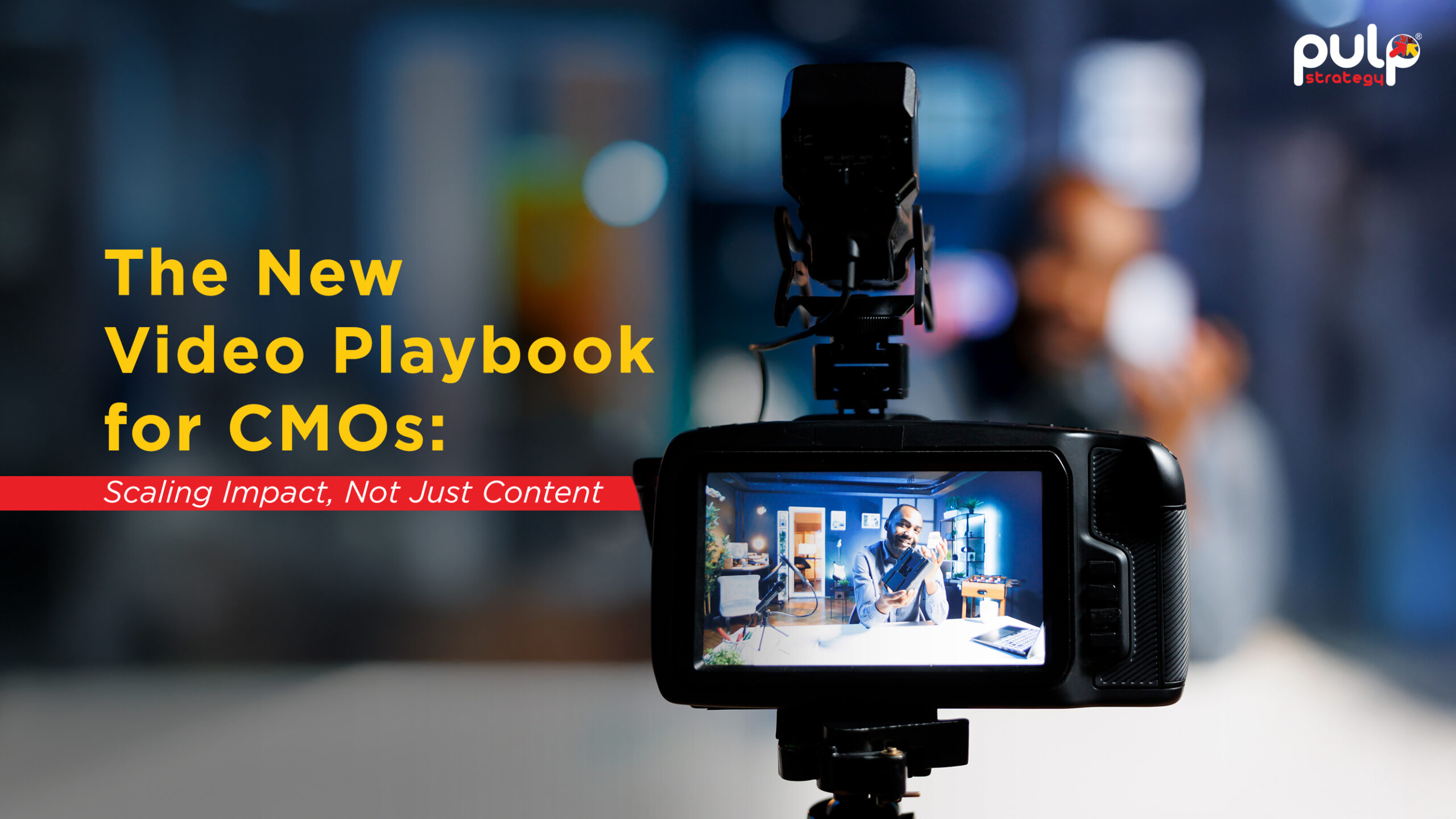What if your brand's voice could echo across diverse audiences, resonating with every listener? That’s the transformative power of adopting diversity and inclusion (D&I) in your marketing strategy.
Did you know that 74% of CMOs agree that marketing messages featuring diverse voices are likely to create more brand engagement? Well, this staggering data clearly proves that what was once a social responsibility has evolved into a strategic imperative. The new business landscape, shaped by evolving consumer expectations and a rapidly changing demographic, demands a more nuanced approach to marketing.
With the one-way street of communication reaching a dead end, businesses must shift to a multi-lane plan that resonates with diverse audiences. This presents a unique opportunity for forward-thinking marketing leaders. Embracing diversity and inclusion unlocks possibilities, from expanding the consumer base and fostering innovation to enhancing brand reputation and market share. It’s not just about ticking boxes or following trends. True success lies in integrating D&I into the core of your outreach strategy.
Understanding D&I in Marketing: Unlocking the Code

Imagine walking into a room filled with people from all walks of life, each bringing unique perspectives shaped by diverse backgrounds. This is the essence of diversity and inclusion in marketing- it's about incorporating a spectrum of voices to make your brand connect with a broader audience.
Diversity in marketing refers to the representation of different demographic groups, including race, gender, age, and cultural background. Inclusion goes a step further, focusing on the integration and engagement of these diverse groups within marketing strategies. To sum up, while diversity makes sure that a variety of voices are heard, inclusion ensures these voices are valued and actively involved in shaping brand narratives.
Moreover, diversity and inclusion shouldn't just be external talking points—they must be ingrained in your company's DNA. Your employer branding should unequivocally reflect these values, ensuring no disparities exist between male and female employees, or any bias based on gender or other factors. When your internal culture embodies true inclusivity, it enhances your brand's external messaging, creating a more authentic and relatable identity.
The Business Case for D&I: A No-Brainer in the Growth Equation

Investing in D&I efforts can lead to tangible benefits, as numerous studies have consistently shown a positive correlation between these principles and increased brand loyalty, market share, and profitability.
Fostering Brand Love:
A Facebook Advertising survey reveals that around 60% of consumers tend to be more loyal to brands that champion diversity and inclusion in their advertising campaigns. Incorporating diverse and inclusive messaging allows businesses to build deeper connections with a broader audience. Acknowledging and celebrating differences can significantly contribute to the increased brand loyalty and trust.
Optimizing Brand Reputation:
A strong commitment to diversity and inclusion often results in a favorable consumer perception, further strengthening the brand’s reputation. As global demographics shift, marketing strategies that integrate diversity and inclusion more accurately reflect the real world, making them more authentic and relatable.
Driving Enterprise-Wide Innovation:
Diverse perspectives foster innovation and creativity within marketing teams, leading to more effective campaigns and strategies. A study found that companies with more diverse management teams have 19% higher revenues due to innovation. It allows businesses to better understand and address diverse customer needs, resulting in more relevant and impactful marketing efforts.
Expanding Your Consumer Base:
Leveraging diversity and inclusion can significantly boost market share by attracting a broader range of consumers. By authentically reflecting the diverse demographics of their audience, brands not only expand their reach but also unlock opportunities in previously untapped markets. This approach helps brands connect with new customer segments and enhance their overall presence.
High-Impact D&I Strategies: Walk the Talk with Leadership

Here are the proven D&I strategies that elevate your marketing efforts and make a real impact.
1. Conduct a Diversity Audit:
To effectively incorporate D&I into brand messaging, start with a diversity audit of your current marketing materials and strategies. Gain a deep understanding of your audience's composition, diverse needs, and preferences. This involves conducting demographic, psychographic, and cultural research to identify and address the various groups within your target market.
2. Build Diverse Marketing Teams:
For true impact, diversity needs to be reflected in both your external marketing efforts and within your internal teams, fueling creativity and collaboration. Having a team that includes members from diverse backgrounds brings varied perspectives and ideas to the table. This diversity of thought can result in more innovative and inclusive marketing strategies.
3. Develop Authentic Storytelling:
Authentic storytelling is key to resonating with diverse audiences. Create content that reflects real experiences and avoids stereotypes. Highlight stories that celebrate diversity and inclusivity, ensuring they align with your brand's values and mission.
4. Engage with Diverse Communities:
Engaging with diverse communities is essential for understanding their unique needs and perspectives. Create outreach programs, form partnerships, and collaborate with diverse organizations to promote inclusion and inform your messaging. Partnering with influencers who reflect your target demographics is also an effective way to build authentic connections with different audience segments.
5. Use Inclusive Language and Imagery:
The language and imagery used in marketing materials should be inclusive and representative of diverse audiences. Avoid stereotypes and clichés, and choose visuals that reflect a range of identities and experiences. Using inclusive language (such as gender-neutral language) demonstrates a commitment to diversity and creates a sense of belonging.
6. Implement Inclusive Design Principles
Inclusive design ensures that marketing materials are accessible and user-friendly for all audiences, including those with disabilities. Consider factors such as readability, colour contrast, and alternative text for images. Designing with inclusivity in mind enhances the overall user experience and broadens your brand's reach.
7. Manage Diverse Stakeholder Expectations
Balancing diverse stakeholder expectations is crucial for effective diversity and inclusion efforts. Each group—customers, employees, and partners—has unique views on what D&I should look like, which can lead to challenges if not managed well. Brands should create engagement strategies like advisory panels, regular surveys, and transparent communication to address these varied concerns. By actively listening and aligning the D&I goals with stakeholder expectations, you can build trust and foster stronger relationships across the board.
Overcoming Challenges: Do’s and Don’ts to Avoid the Black Hole

Incorporating diversity and inclusion into brand messaging comes with its own set of challenges. But by being mindful of potential pitfalls, brands can create more authentic and effective campaigns. Here’s a guide on what to do—and what to avoid.
Identifying Specific Challenges
- Resistance to Change: Some companies may face resistance from stakeholders who are wary of changing traditional approaches.
- Superficial Efforts: Tokenism can undermine genuine D&I efforts, leading to a lack of authenticity.
- Limited Resources: Smaller businesses may struggle with limited resources to implement comprehensive D&I strategies.
- Cultural Sensitivity: Navigating cultural differences requires sensitivity and understanding to avoid missteps.
D&I Do’s: Winning Moves
- Prioritize Authenticity: Ensure that your D&I messaging aligns with your brand’s core values and mission. Authenticity is key to resonating with diverse audiences and building trust.
- Seek Input from Diverse Voices: Involve team members from varied backgrounds and external partners in the content creation process. This helps ensure that your messaging is inclusive and reflective of real-world experiences.
- Continuously Educate and Train Staff: Invest in ongoing D&I training for your team to foster awareness and understanding. This education is crucial for maintaining a genuinely inclusive brand culture.
- Allocate Resources: Allocating resources, even in small increments, can help support meaningful D&I initiatives. These investments pave the way for sustained progress.
- Focus on Cultural Competence: Developing cultural competence within teams through training and engagement with diverse communities can enhance sensitivity and understanding.
- Monitor and Measure Impact: Track the effectiveness of your D&I initiatives and be open to making adjustments based on feedback and results. Regular assessment helps keep your strategy on track and relevant.
D&I Don’ts: Preventing Failures
- Don’t Engage in Tokenism: Avoid superficial efforts that merely give the appearance of diversity without meaningful action. Tokenism can damage your brand’s credibility and alienate audiences.
- Don’t Stereotype or Misrepresent: Be cautious of clichés and avoid reducing individuals or groups to stereotypes. Misrepresentation can harm your brand’s reputation and relationships with diverse communities.
- Don’t Ignore Feedback: Be receptive to criticism and willing to make changes based on constructive feedback from your audience. Listening and responding to concerns is essential for maintaining trust.
- Don’t Assume One Size Fits All: Recognize the unique needs and preferences of different demographic groups. Tailor your messaging to address these differences, ensuring your brand appeals to a broad and diverse audience.
- Don’t Do It for the Sake of Doing It: Lastly, diversity and inclusion are more than just moral obligations; they should be pursued with genuine commitment and integrated into your core business values and practices. Avoid superficial D&I initiatives that merely check a box without creating real impact.
By following these do’s and avoiding these don’ts, brands can navigate the challenges of D&I messaging more effectively, creating content that really works in today’s diverse era.
Success Stories: Brands That Nailed the Diversity Equation

Several B2B brands have successfully incorporated D&I into their messaging, serving as models for others.
- Microsoft: Known for its "Empower Possibility" initiative, Microsoft has focused on inclusive technology and accessibility. The company’s commitment to disability inclusion through products like the Xbox Adaptive Controller highlights its dedication to creating an inclusive experience for all users.
- IBM: IBM's "Be Equal" campaign reflects its long-standing commitment to diversity. The campaign not only promotes gender equality but also encourages employees to become allies in creating an inclusive workplace.
- Accenture: Accenture’s "Inclusion Starts with I" campaign emphasized the importance of individual actions in promoting inclusivity. This campaign, paired with the company's dedication to gender parity, showcased how employee-driven initiatives can lead to meaningful change.
- Salesforce: The company’s "Equality for All" initiative highlights its commitment to equal opportunities. Through partnerships with organizations like the National Urban League, Salesforce has demonstrated how fostering diversity leads to business success.
Conclusion: Looking Ahead
In the past, marketing often leaned on narrow stereotypes and homogenous portrayals, but today’s brands are moving beyond these limitations, embracing diverse narratives that reflect the realities of their audiences. By weaving diversity and inclusion into the fabric of messaging, businesses are not just meeting the expectations of a changing world—they're building stronger, more authentic connections with a broader audience. For B2B CMOs, this shift is not just a trend but an obligation, one that offers the potential to innovate, connect deeply, and lead the market by example.







